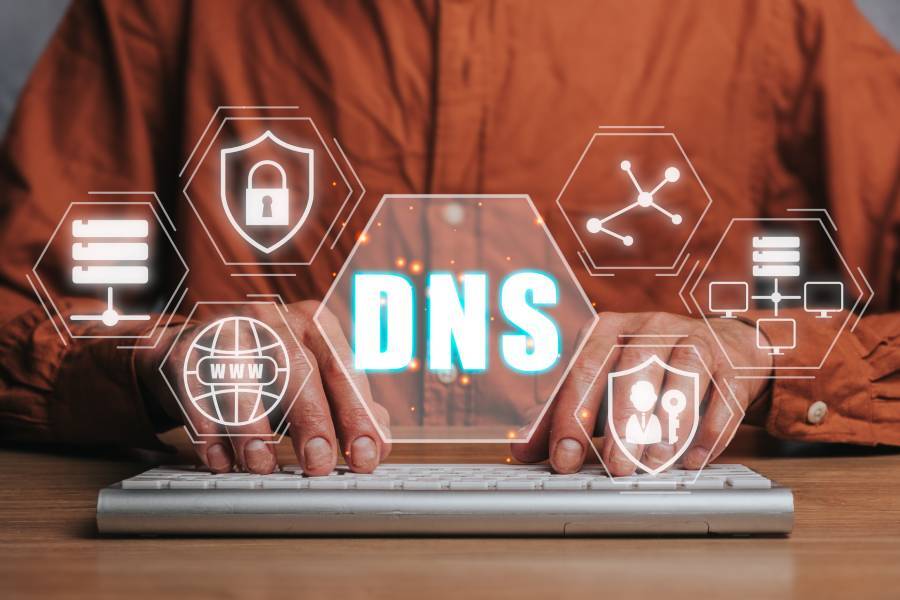What is DNSSEC: A Comprehensive Guide to DNS Security
In a time when our online lives are more exposed than ever, protecting our digital information is crucial. You might not realize it, but every website you visit is tied to a complex system designed to translate human-friendly web addresses into machine-ready IP addresses. This system, known as the Domain Name System (DNS), can be vulnerable to various attacks that threaten the security of your personal data.
Here comes DNSSEC, or Domain Name System Security Extensions, a powerful tool that adds an extra layer of safety by ensuring that the information transported between your device and the web is genuine and untampered with. By shedding light on how DNSSEC enhances security and fosters trust among users, this guide will help you understand why it’s essential for both casual internet users and business owners alike to pay attention to this often-overlooked aspect of online security.
DNSSEC, or Domain Name System Security Extensions, is a suite of specifications designed to protect the integrity and authenticity of DNS data by enabling data origin authentication and data integrity protection through digital signatures based on public key cryptography. It helps mitigate vulnerabilities in the traditional DNS system, such as cache poisoning attacks, thereby enhancing overall internet security.
How DNSSEC Works
Step I – The Basics of DNSSEC
At its core, DNSSEC operates through something called a chain of trust. Imagine a game of telephone, where each participant confirms the message before passing it along; similarly, a DNS resolver—software that queries the DNS system for information—examines the digital signatures accompanying DNS data to ensure it’s in its original, untampered state. Each segment or zone of the domain is signed with a unique digital signature created using cryptography. This signature lives alongside the standard data returned from the DNS query, acting as a protective shield against potential threats.
Now that we understand this foundational concept of signing, let’s explore how this enhances trust among various levels of the domain hierarchy.
Step II – Establishing Trust Using the Public Key Infrastructure (PKI)
Building upon that chain of trust is where public key infrastructure (PKI) comes into play, facilitating secure communications over potentially insecure channels. For instance, think about what happens when a resolver looks up something like example.com. It’s not just retrieving an IP address; it’s also accessing a cryptographic signature linked to that response. To validate this signature and confirm legitimacy, the resolver employs a public key that was previously signed by a higher-level authority. This creates a cascading effect, linking back to the root of the DNS hierarchy.
A notable benefit of relying on PKI in DNSSEC is that every layer reinforces authentication; if one step in this chain fails, it immediately signals potential tampering or misdirection.
What’s fascinating here is not just the seamless interaction but also how deeply embedded these trust relationships are designed to be. Each piece fits into this intricate puzzle, enhancing overall internet safety. However, real-world applications reveal that many users remain unaware of who manages their domain’s signing keys or even what those keys do.
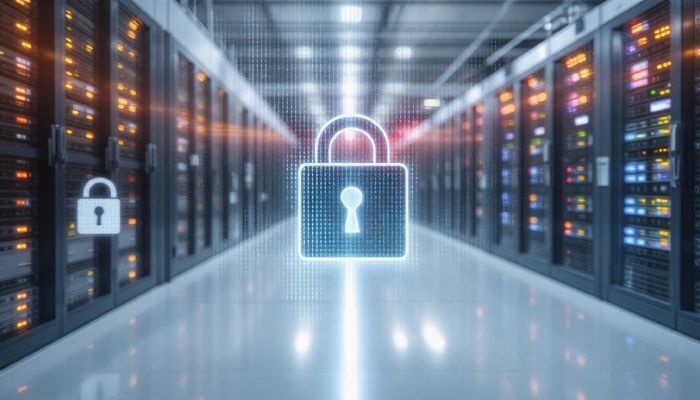
Understanding these mechanisms is crucial not only for network operators but also for domain owners seeking to implement effective security measures against emerging digital threats. As we transition forward, let’s investigate the role of cryptographic methods and digital signatures in providing robust security solutions.
Digital Signatures and Cryptography
At the core of DNSSEC lies the powerful mechanism of digital signatures. Think of these signatures as a way to authenticate information in the digital world. Just like a signature on a piece of paper verifies the identity of a person, digital signatures affirm the authenticity of data transmitted over the Internet.
They are created using a unique pair of keys—a private key for signing the data and a public key for verification. When data is signed with the private key, a digital signature is produced, which can then accompany that data as it travels through the complex pathways of the web. Anyone receiving this data can use the corresponding public key to verify its authenticity. Simply put, if you possess the public key, you can check that this data indeed comes from the owner of the private key, ensuring that it hasn’t been altered or tampered with along its journey.
Understanding Digital Signatures
Digital signatures rely heavily on mathematical algorithms and are instrumental in establishing trust in online communications. For example, when your browser connects to a secure website, it checks for a valid digital signature to ensure that you’re indeed communicating with the right entity. This process assures users that their personal information remains secure while browsing or transacting online.
In essence, digital signatures serve as an electronic fingerprint, providing a vital layer of trust in our increasingly interconnected world.
However, harnessing this level of security isn’t just about having digital fingerprints; it’s also about understanding how cryptographic algorithms play an essential role in creating them.

The Role of Cryptographic Algorithms
Cryptographic algorithms are the backbone of creating and verifying these digital signatures. In the realm of DNSSEC, two primary types are commonly used: RSA (Rivest-Shamir-Adleman) and ECC (Elliptic Curve Cryptography).
While RSA has historically been favored due to its straightforwardness and reliability, ECC is steadily gaining traction owing to its stronger security with significantly shorter key lengths. The difference is significant—while RSA keys may need to be 2048 bits or larger for acceptable security, ECC can offer equivalent protection with keys as small as 256 bits. This shortened length not only enhances efficiency but also improves performance during operations such as validation, making ECC particularly desirable in environments where system resources are precious.
Furthermore, both RSA and ECC utilize hash functions—mathematical algorithms that transform input data into fixed-size output values. In DNSSEC implementations, hash functions like SHA-256 are frequently employed not only to create those digital signatures but also to provide integrity checks.
This combination of digital signatures and robust cryptographic algorithms empowers DNSSEC to provide reliable protection against various vulnerabilities found in traditional DNS systems.Just as DNSSEC ensures the authenticity of DNS records, email authentication protocols like SPF, DKIM, and DMARC play a crucial role in verifying the legitimacy of email senders, collectively strengthening an organization’s overall DNS-based security posture.
As we explore further, it’s essential to examine how these elements translate into practical benefits for users considering adopting enhanced security measures.
Benefits of Using DNSSEC
DNSSEC provides several critical benefits to network security. One notable advantage is its ability to significantly enhance security. By validating the authenticity of DNS data using digital signatures, DNSSEC effectively guards against numerous cyber threats that can exploit vulnerabilities in traditional DNS systems. For instance, a recent 2023 security report revealed that domains implementing DNSSEC experienced a remarkable 43% reduction in DNS-based attacks compared to those without this crucial protection. This means that by adopting DNSSEC, organizations can greatly bolster their defenses against common threats like cache poisoning and man-in-the-middle attacks.
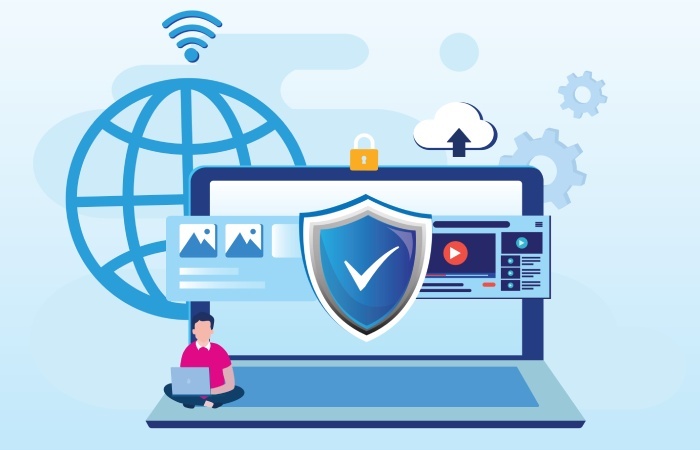
Enhanced security naturally leads to another significant benefit: increased user trust. When users feel secure accessing a website, they begin to form a stronger bond with the brand or service. A prominent online retailer shared an experience highlighting this transition; after implementing DNSSEC, they witnessed a notable rise in customer trust and transactions as users were more inclined to enter personal information on their site. This shift required technical adjustments and commitment, but the results spoke volumes about how essential online safety is for consumer behavior.
A company with enhanced security reassures its users, creating an environment where engagement flourishes, resulting in increased loyalty and ultimately higher sales figures.
Despite these compelling advantages, many domain registrars and hosting providers remain hesitant to adopt or fully support DNSSEC. The reality is that widespread implementation still faces challenges related to complexity and a lack of awareness among users. Without proper education regarding its significance and capabilities, organizations may continue overlooking DNSSEC’s potential benefits.
Moreover, consider this: studies have shown that 70% of organizations reported improved trust in their DNS infrastructure after deploying DNSSEC. This statistic reinforces the importance of proactively addressing risks through robust security measures. However, it’s essential to remember that just implementing DNSSEC isn’t enough without ongoing support from domain registrars and proper configuration at both ends—the authoritative servers and recursive resolvers.
Enhancing your digital footprint with the benefits of DNSSEC is about taking ownership of your online security posture. The combination of reduced risk of attacks and increased user confidence creates an environment where brands can thrive in the digital space while providing their customers with peace of mind.
As we consider how organizations can navigate the complexities associated with enhancing their online framework, it’s vital to explore effective management practices tailored for ensuring robust security measures.
Key Management Strategies
Effective key management is crucial for DNSSEC’s success but it’s also one of its most challenging aspects. To ensure that your domain remains secure, develop a systematic approach toward key management that addresses creation, storage, rotation, and recovery—all essential pieces in this complex puzzle.
Step I – Generating and Storing Keys
Start by generating separate keys for different functions within DNSSEC. You’ll need a Zone Signing Key (ZSK) for signing your DNS data and a Key Signing Key (KSK) for signing the ZSK itself. This separation of duties not only enhances security but also simplifies the process of key rotation when necessary.
Store these cryptographic keys securely in hardware security modules (HSMs) or other robust facilities designed for safe key management. It’s critical to limit access to these keys so that only authorized personnel can handle them; this minimizes the risk of potential misuse or theft.
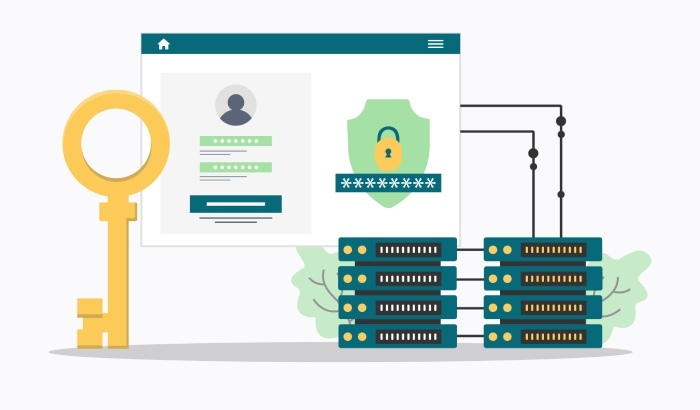
After generating and securing your keys, the next step is to periodically rotate them to maintain security.
Step II – Rotating Keys
Regular key rotation is essential for minimizing the risk associated with compromised keys. For practical purposes, consider rotating your ZSK quarterly while reserving the KSK rotations for annually. This staggered approach helps ensure that you’re frequently addressing vulnerabilities without overwhelming the system.
Schedule these rotations during low-traffic periods; doing so minimizes disruptions and provides a cushion against unexpected issues during potentially high-stress transitions.
Even with solid key generation and rotation, it’s equally important to plan for the unexpected.
Step III – Backup and Recovery Plans
Implementing comprehensive backup and recovery plans ensures that you can restore your keys if they are lost or compromised. Regularly back up your key material—this may seem tedious, but it is far less complex than dealing with a loss at a critical moment.
Furthermore, testing your recovery procedures is vital; rehearse these measures to verify that they function correctly in case of an actual failure. Having well-prepared recovery protocols not only safeguards against loss but reinforces trust in your DNSSEC deployment as a whole.
A final piece of advice is to continuously educate everyone involved around these processes. As technology evolves, staying informed about best practices in key management becomes increasingly important to adapt effectively to new threats that may arise in the digital landscape.
With a solid understanding of how to manage your keys effectively, it’s essential to recognize and address the challenges that can impede the successful adoption of this security framework.
Obstacles in DNSSEC Deployment
Despite its potential to enhance internet security dramatically, various obstacles hinder the adoption of DNSSEC. The first hurdle many organizations encounter is the complexity associated with configuring and managing this security protocol. Imagine having to navigate a labyrinth; without proper guidance and knowledge, it can be daunting.
Setting up DNSSEC involves intricate steps like key generation, signing zones, and establishing trust anchors—tasks that require specialized knowledge in cryptography and DNS management. Unfortunately, many organizations lack personnel who possess this expertise, creating a significant barrier to implementation.
This complexity does not just apply during setup; it extends to ongoing management as well. Without regular maintenance and updates, the integrity of the security measures can diminish over time. It can feel overwhelming for IT teams already stretched thin with their routine tasks. Thus, many organizations opt for the easier route of neglecting DNSSEC altogether, leaving them vulnerable to attacks.
Another pressing challenge facing organizations is the financial aspect of implementing DNSSEC.
When we talk about cost implications, it’s essential to consider both initial investments and ongoing operational expenses. Implementing DNSSEC often requires additional hardware, such as Hardware Security Modules (HSMs), specifically designed for secure key management. Sourcing these HSMs can be quite expensive upfront. Furthermore, maintaining these systems incurs ongoing costs that add up quickly.
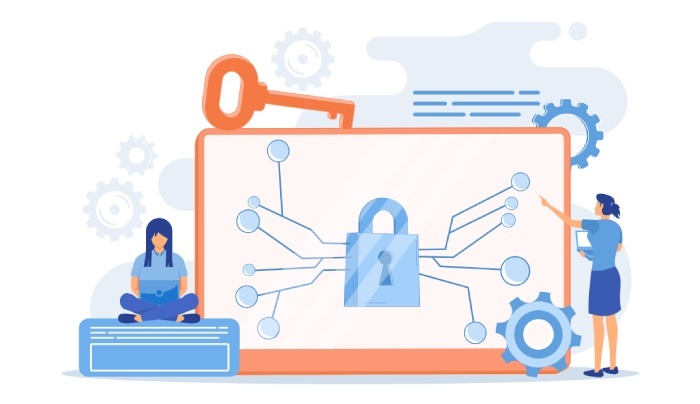
Beyond equipment, another layer of financial burden comes from training personnel. Successfully managing DNSSEC demands continuous education in evolving cryptographic practices and software updates. Organizations thus require skilled staff who are well-versed in both technology and security measures—a necessity that many companies find challenging due to resource limitations or existing labor constraints.
As indicated by surveys conducted in 2022, 30% of organizations reported a lack of expertise as a key barrier to DNSSEC implementation while 25% cited the complexity involved as a significant obstacle. These statistics highlight how practical concerns can overshadow even the most compelling cybersecurity solutions.
Understanding these hurdles is paramount for anyone considering implementing this critical security measure. The conversation must shift from merely acknowledging its importance to strategizing viable solutions for overcoming these barriers.
Following this examination of obstacles, we can now explore innovations on the horizon that promise to reshape the landscape of internet security.
Future Trends in DNS Security
As we look ahead, several key trends are likely to shape the future of DNS security. First and foremost is the increased automation in DNSSEC management. Managing DNS can be complex, particularly regarding key management aspects such as key rotation and zone signing. Automating these processes transforms what once felt like a burdensome chore into a streamlined operation. Imagine software taking care of tedious tasks while seasoned IT professionals focus on strategic initiatives instead. This newfound freedom could significantly reduce human error and lead to higher levels of reliability for system administrators.
Such ease of deployment makes embracing these technologies all the more worthwhile.
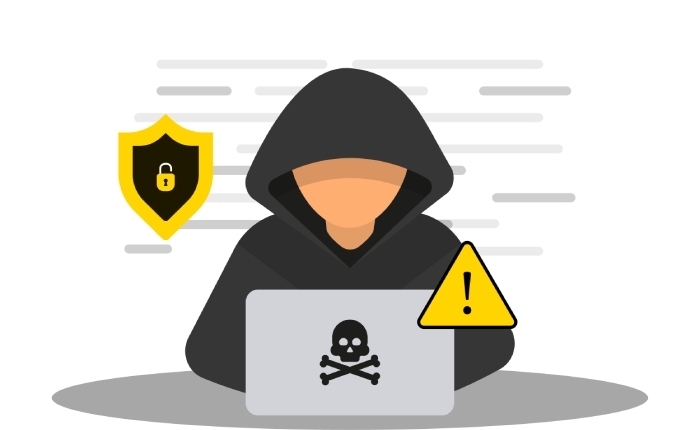
In addition, we’re witnessing an intriguing integration with emerging technologies that propel DNSSEC into exciting new territories. One notable example is the use of blockchain technology, which adds an extra layer of security through tamper-proof data validation. The concept behind decentralized DNS means that data can be verified without relying on a single point of failure, thereby enhancing overall trust and resilience against attacks. For organizations wary of cyber threats, this integration presents a formidable strategy for safeguarding their networks.
With technological advancements driving change, many organizations are adopting these enhanced security measures, reflecting a larger shift towards adoption in the industry. Recent surveys suggest that by 2030, up to 70% of major domains will implement DNSSEC due to increasing regulatory pressures and a growing demand for cybersecurity measures. The urgency surrounding legislative initiatives, like the EU’s NIS2 Directive, reinforces this trend and positions DNSSEC as not just a security enhancement but also a critical compliance necessity for businesses worldwide.
Collectively, these movements signal a decisive shift in how organizations perceive and implement DNS security measures.
Ultimately, as we navigate this digital era filled with evolving cyber threats, investing in cutting-edge solutions like automating DNSSEC management and exploring blockchain integration is not just advisable; it’s imperative for sustainable security practices. Embracing these changes paves the way for a more resilient digital future, ensuring that our infrastructures are well-equipped to manage the challenges that lie ahead.
The future of DNS security is bright, provided organizations recognize the significance of these trends and actively implement them. Investing in innovation is crucial for maintaining robust protection against emerging cyber threats.

